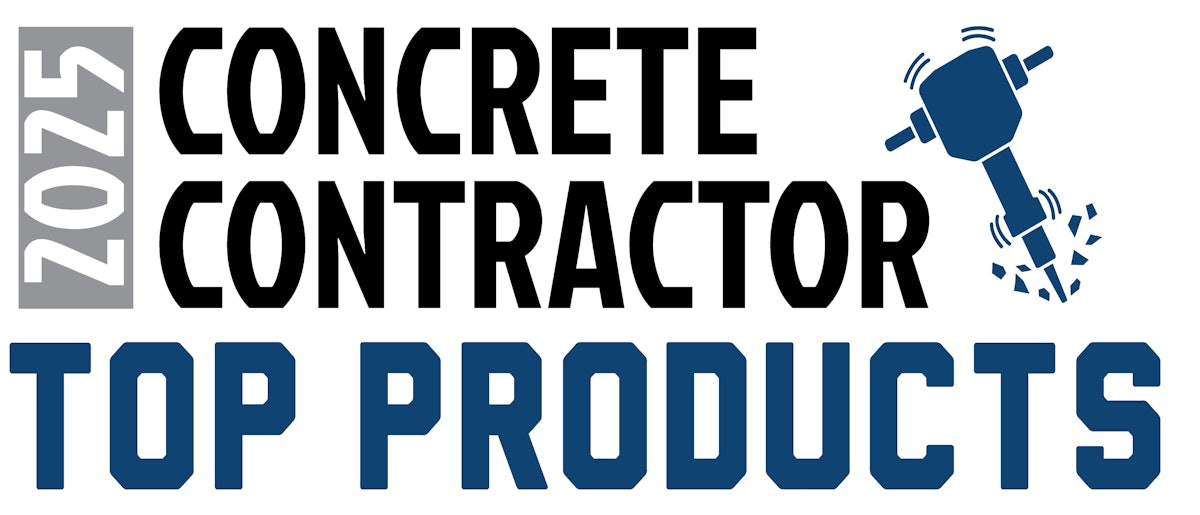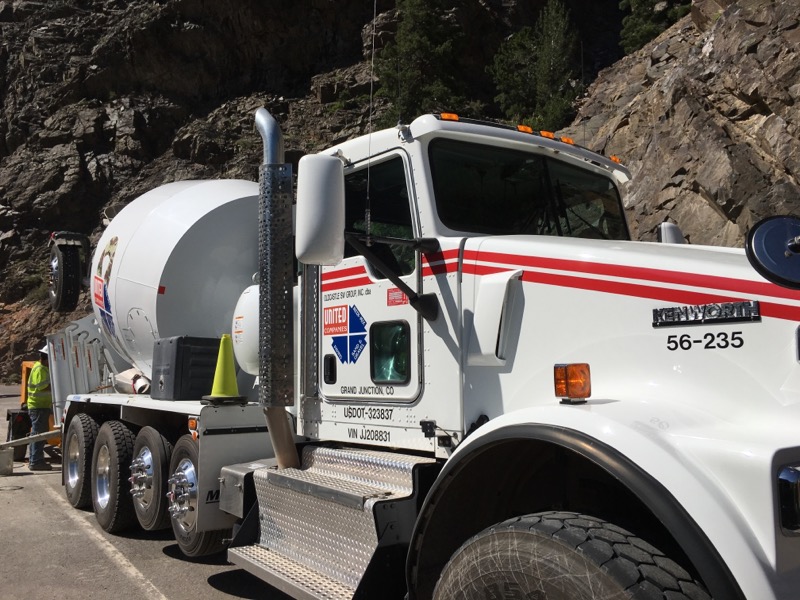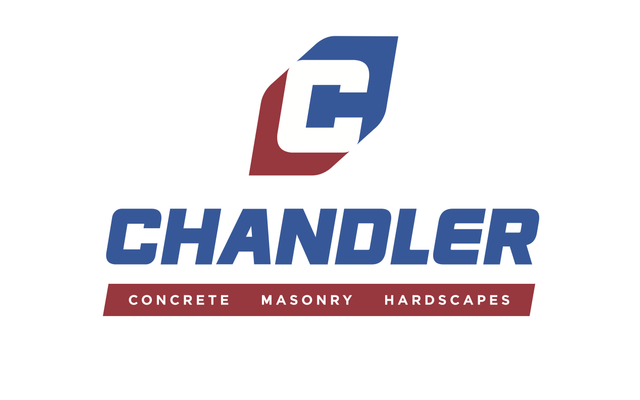The Benefits of Making Use Of Concrete Providers for Long Lasting Structures
Concrete solutions supply a variety of advantages for constructing durable frameworks. This material is renowned for its phenomenal toughness and long life. Its resistance to ecological factors makes it a practical selection for various environments. Furthermore, concrete is often more cost-efficient in the future. As engineers and building contractors progressively explore innovative applications, the capacity of concrete in layout becomes a lot more fascinating. The discussion of these benefits exposes compelling understandings right into modern construction techniques.

Exceptional Stamina and Toughness
Concrete is renowned for its exceptional strength and longevity, making it a preferred product in building and construction. Concrete Contractors Near Me. Its capacity to stand up to and endure hefty loads contortion under pressure is unequaled, which is why it is frequently made use of for fundamental aspects, sustaining structures, and skyscrapers. The composition of concrete, which includes concrete, water, and accumulations, enables it to accomplish high compressive stamina, frequently going beyond that of traditional building materials like timber or steel. This strength assures architectural stability and long life, thereby reducing upkeep expenses over time. Additionally, concrete's sturdiness appears in its capacity to sustain various anxieties without catching tear and use, making it appropriate for varied applications, from bridges to household homes. Generally, the robust characteristics of concrete add to its reputation as a reputable choice for creating enduring frameworks that stand the test of time
Resistance to Environmental Factors
Many building and construction materials are vulnerable to environmental damage, concrete displays impressive resistance to various factors such as dampness, temperature changes, and chemical direct exposure. Its intrinsic buildings make it especially ideal for diverse applications, from property buildings to big framework projects. Concrete's reduced permeability limitations water absorption, reducing the risk of damage from freeze-thaw cycles and avoiding mold and mildew growth. Furthermore, it keeps architectural integrity when revealed to extreme temperatures, making it ideal for regions with extreme environments. Concrete additionally stands resilient against chemical strikes, consisting of acids and sulfates, which can deteriorate various other materials. This resistance is even more improved by the usage of specialized ingredients and therapies during the blending process. In general, concrete's sturdiness in the face of environmental difficulties assurances durability and integrity, making it a recommended choice for designers and home builders aiming to build sustaining frameworks.
Cost-Effectiveness With Time
Cost-effectiveness in concrete solutions shows up as a long-term investment that significantly benefits structures. This strategy not only reduces maintenance expenditures however likewise improves energy efficiency, resulting in considerable cost savings in time. Understanding these factors is vital for assessing the overall worth of long lasting concrete constructions.
Long-Term Investment Conveniences
Spending in long lasting frameworks yields significant long-term advantages that expand beyond initial expenses. Concrete solutions, understood for their robustness, contribute to a framework's durability, eventually lowering the complete expense of possession. By using top quality materials and expert workmanship, proprietors can anticipate less repair services and replacements with time. This dependability translates right into a stable asset value, making concrete building and constructions a smart economic selection in the realty market. Additionally, frameworks built with concrete are typically more energy-efficient, more boosting their cost-effectiveness. Because of this, the preliminary financial investment in concrete services can cause substantial cost savings and higher returns for many years, affirming the value of choosing sturdy choices for long-lasting building and construction projects.
Lowered Upkeep Costs
The longevity of concrete structures not just boosts possession worth but likewise substantially reduces maintenance expenses with time. Unlike materials that deteriorate swiftly, concrete shows impressive strength versus numerous environmental elements, such as wetness, temperature changes, and parasites. This inherent sturdiness converts to fewer replacements and repairs, therefore minimizing long-term expenses. In addition, the low absorption rate of concrete restrictions problems connected to mold and mildew and mildew, which can necessitate pricey remediation initiatives. Regular maintenance is often minimized to easy cleaning as opposed to substantial repairs, further adding to cost-effectiveness. Therefore, homeowner buying concrete solutions can anticipate a considerable decrease in upkeep budgets, making concrete a financially sound selection for resilient frameworks.
Power Efficiency Cost Savings
As energy efficiency becomes increasingly crucial in construction, concrete frameworks stand out for their capacity to enhance long-term financial savings on utility bills. The thermal mass of concrete allows structures to keep stable indoor temperatures, decreasing the requirement for home heating and cooling systems. This home reduces power usage and equates to lower power expenses in time. Additionally, concrete's sturdiness adds to less substitutes and fixings, also boosting cost-effectiveness. Moreover, contemporary concrete technologies, such as shielded concrete types and energy-efficient mixes, boost insulation and energy efficiency, bring about considerable financial savings. Investing in concrete solutions not just benefits the environment with reduced energy use yet also supplies substantial financial benefits for building owners in the long run.
Convenience in Design and Application
Concrete's adaptability in design and application permits a variety of adjustable visual alternatives, making it suitable for various architectural styles (Concrete Pasadena TX). Its ability to adapt to diverse structural applications improves its functionality in both industrial and domestic tasks. This flexibility placements concrete as a favored material in contemporary construction
Customizable Aesthetic Options

Varied Structural Applications
Discovering the varied architectural applications of concrete reveals its amazing adaptability in layout and functionality. Concrete is used in numerous forms, including structures, wall surfaces, pavements, and attractive components, permitting it to adapt to many architectural styles. Its intrinsic stamina and durability make it suitable for skyscraper structures, bridges, and framework tasks. In addition, concrete can be formed right into detailed forms, suiting innovative layouts while maintaining structural integrity. This adaptability also includes property applications, such as outdoor patios, driveways, and maintaining wall surfaces. Furthermore, developments in innovation have led to the development of specialized concrete blends, boosting efficiency in certain atmospheres. This varied applicability underscores concrete's vital function in modern construction, fulfilling both visual and useful needs efficiently.
Low Maintenance Needs
Lots of homeowner appreciate the reduced maintenance requirements connected with concrete structures. Unlike products such as wood or steel, concrete is normally immune to parasites, rot, and rust. This resilience greatly minimizes the regularity and price of repair work wikipedia reference with time. Splits and surface wear can be quickly attended to with minimal effort, often needing only regular sealing or resurfacing.Additionally, concrete structures do not call for regular paint or staining, additional adding to their reduced upkeep. This characteristic is specifically valuable for business residential properties, where maintenance expenses can swiftly accumulate.Furthermore, concrete is less at risk to weather-related damage, making sure that frameworks stay undamaged despite ecological problems. Therefore, residential or commercial property proprietors can enjoy the long-lasting advantages of concrete, including minimized labor and upkeep costs, enabling them to allocate resources to various other essential areas of their buildings. Eventually, the reduced upkeep needs of concrete make it an attractive selection for building resilient structures.
Eco-Friendly Structure Material
As the demand for sustainable building methods expands, concrete becomes an environment-friendly structure material that offers various ecological advantages. Its production can incorporate recycled materials, such as commercial by-products and waste aggregates, which decreases the need for virgin resources and lessens landfill waste. In addition, concrete has the ability to manage temperature level, consequently boosting power performance in structures. This thermal mass impact can bring about lower energy consumption for home heating and cooling, further decreasing a structure's carbon footprint.Moreover, concrete is resilient and long-lasting, which implies structures call for fewer repair work and remodellings gradually, bring about much less resource use overall. Advancements in technology have additionally caused the advancement of green and low-carbon concrete formulas that decrease greenhouse gas emissions throughout manufacturing. By prioritizing concrete in construction tasks, home builders can add to a much more lasting future while making sure the longevity and strength of frameworks.
Improved Residential Or Commercial Property Value and Charm
A sound concrete structure especially improves residential or commercial property worth and appeal, often making it a lot more eye-catching to potential customers or renters. Concrete's sturdiness and low upkeep needs contribute substantially to long-lasting investment returns. Residences featuring high-grade concrete buildings often tend to attract higher deals due to their viewed security and long life. Additionally, aesthetically pleasing concrete layouts, such as stamped or tinted finishes, can raise aesthetic appeal, producing a favorable first impression.Moreover, concrete structures usually meet contemporary structure criteria, which can be a selling point for ecologically mindful consumers. The energy effectiveness connected with well-insulated concrete also interest customers wanting to lower energy prices. Generally, spending in concrete services not only bolsters the structural integrity of a property but also enhances its bankability, resulting in enhanced building worth and an affordable edge in the realty market.
Regularly Asked Inquiries
How much time Does It Take to Cure Concrete Effectively?
The healing procedure of concrete normally takes concerning 28 days to achieve ideal stamina, although first setting occurs within hours. Variables like temperature and moisture can influence the healing period and performance significantly.
What Types of Concrete Services Are Readily Available?
Different kinds of concrete services exist, including pouring, developing, completing, resurfacing, and attractive concrete. Concrete Pasadena TX. Companies might also supply repair work, restoration, and installment of concrete frameworks, accommodating both property and commercial demands
Can Concrete Be Recycled After Its Use?
Concrete can without a doubt be recycled after its usage. When processed, it can be repurposed for brand-new construction jobs, reducing waste and promoting sustainability within the construction industry while preserving structural integrity in brand-new applications.
What Are the very best Practices for Pouring Concrete?
When putting concrete, ideal methods include appropriate site prep work, guaranteeing suitable temperature level problems, utilizing ideal mixing ratios, keeping consistent putting strategies, and allowing ample healing time to boost toughness and durability of the completed structure.
Exist Any Type Of Alternatives to Standard Concrete?
